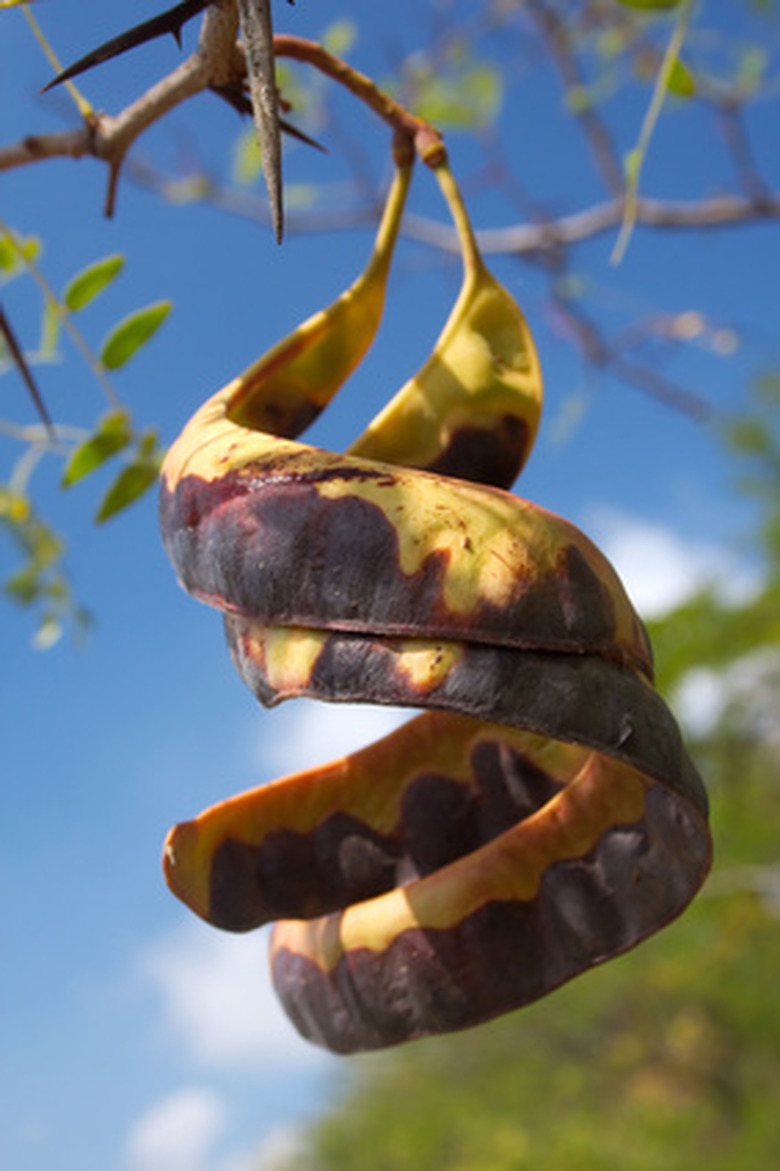Characteristics Of Legumes
Legumes provide tremendous economic, ornamental, and food value to humans. One of the largest plant families, Fabaceae (formerly Leguminoseae), are found on all continents except Antarctica. Legumes, with or without stem spines, take the plant forms of trees, shrubs, herbs and climbing vines. Examples include soybeans, alfalfa, clover, peas, beans, and the royal poinciana and golden shower tropical trees.
Foliage
The leaves of all legumes are greatly varied, but a common characteristic is that they are always arranged alternately on stems, comprising several leaflets on one overall leaf (pinnately compound). Legume leaflets are normally arranged opposite each other, while other species' leaves look like a fingered hand (palmately compound). Some legume leaf types include three-lobed leaves and those with simple, entire leaf blades. The stems of leaves and leaflets (petioles) typically reveal swollen bases.
- Legumes provide tremendous economic, ornamental, and food value to humans.
- Legumes, with or without stem spines, take the plant forms of trees, shrubs, herbs and climbing vines.
Flowers
Three distinct, differently shaped flower types exist among legumes. Taxonomists usually group these as subfamilies, while some choose to treat them as separate plant families unto themselves. The subfamily Caesalpinioideae bears flowers that have bilateral symmetry–only one axis line can be drawn to create two identical, mirroring sides of the blossom. One petal differs, looking like a lip or "standard." The subfamily Mimosoideae develops blossoms that display radial symmetry, looking similar no matter where a bisecting axis is drawn. Simply put, legume flowers are spherical and resemble hairy pompoms. Lastly, the subfamily Papilionoideae flowers look "butterfly-like." In other words, these blossoms resemble those of the pea–one standard petal with two lateral wing petals and two lower petals fused into a keel.
- Three distinct, differently shaped flower types exist among legumes.
- The subfamily Caesalpinioideae bears flowers that have bilateral symmetry–only one axis line can be drawn to create two identical, mirroring sides of the blossom.
Fruits
The flowers of all legume plants develop into pods, two-valved fruits that split on two axes when dry to reveal and shed seeds. The size, shape and color of these pods vary by legume species, but in general are nutritious, especially those in subfamily Papilionioideae, which are rich in protein. This subfamily contains many food crops such as sugar and snow peas, the full gamut of beans like soybeans and garden variety types such as lima, pinto, green or yellow wax.
Nitrogen Fixation
A key feature of the root systems of legumes is their ability to fixate atmospheric nitrogen, making it available in soil. Thus, legumes act to fertilize soils by adding nitrogen for use by other plants. This occurs when beneficial soil bacteria fuse and proliferate on the roots of legumes. Interestingly, only plants in the subfamilies Papilionoideae and Mimosoideae effectively fixate nitrogen and improve soils in their vicinity. Few if any plants in the subfamily Caesalpinioideae provide this benefit, according to the International Legume Database & Information Service.
- The flowers of all legume plants develop into pods, two-valved fruits that split on two axes when dry to reveal and shed seeds.
- The size, shape and color of these pods vary by legume species, but in general are nutritious, especially those in subfamily Papilionioideae, which are rich in protein.
References
- International Legume Database & Information Service: Information about the Family Leguminosae
- "Tropical Flowering Plants;" Kirsten Albrecht Llamas; 2003
- New Mexico State University: Nitrogen Fixation by Legumes
